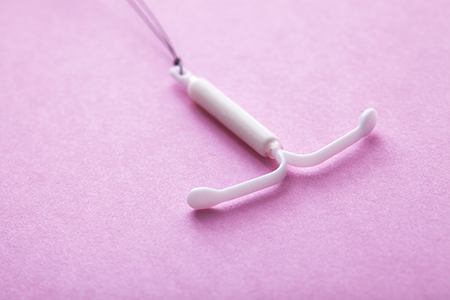
When it comes to birth control, you have many options, including types of intrauterine devices (IUDs). These small, T-shaped devices are inserted into the uterus to provide longer-term pregnancy prevention.
Like any type of birth control, IUDs have both pros and cons. Certain types of IUDs - or an IUD at all - might not be the right choice for every person. Before you talk with your OB GYN about your options, learn more about the two main types of IUDs and the benefits and risks.
Hormonal IUDs
A few different brand names of hormonal IUDs are available in the United States today. All of them work by releasing progestin, which is a synthetic version of the natural hormone progesterone. Depending on the specific hormonal IUD you choose, this type of IUD can last anywhere from three to seven years.
Copper IUDs
Non-hormonal IUDs use copper instead of hormones to help prevent pregnancy. The copper in the IUD works by creating an effect in the uterus that repels sperm and makes it difficult for sperm to reach an egg. There is currently one brand of copper IUD available in the United States, and it lasts about ten years.
Benefits of IUDs
Both hormonal and non-hormonal IUD options come with their own benefits. If you're considering an IUD, you're OB GYN can help you understand which type might fit your needs best.
- Long-acting: One of the main benefits of all types of IUDs is that they provide long-term birth control. Once inserted, you don't have to think about birth control on a daily or monthly basis.
- Effective: IUDs are also highly effective methods of birth control. Data from the Centers for Disease Control and Prevention shows that the rate of unintended pregnancy with both types of IUDs is less than 1%.
- Reversible: If you decide to use a different type of birth control of want to try to conceive, IUDs are easily reversible.
- Lighter periods: Some hormonal IUDs make periods lighter and less painful or stop periods all together.
- Non-hormone options: Copper IUDs offer a long-term birth control option without the use of hormones.
- Emergency contraception: According to the National Library of Medicine, copper IUDs can also be used as emergency contraception if inserted within five days of unprotected sex.
Side effects and risks of IUDs
Along with the many potential benefits, IUDs also have side effects and risks. It's common to have pain during insertion and side effect immediately following the insertion of an IUD, such as cramping or spotting, that resolves after a few days.
In the long-term, some additional side effects or cons of IUD options include:
- Irregular bleeding: Especially during the first months after insertion, IUDs may increase irregular bleeding or spotting. Copper IUDs may cause more painful or heavier periods.
- Side effects of hormones: For those who choose a hormonal IUD, side effects can be like other types of hormonal birth control, such as mood changes, breast tenderness, or headaches.
- No STI protection: IUDs do not provide protection against sexually transmitted infections.
- Pelvic inflammatory disease: If you have an active sexually transmitted disease when an IUD is inserted, it puts you at risk for developing pelvic inflammatory disease.
- Placement problems: There is a small risk that an IUD can come out of the uterus after it is placed or go through the wall of the uterus during the placement procedure.
- Pregnancy risks: In the rare case that a pregnancy happens, the American College of Obstetricians and Gynecologists says there is an increased risk of miscarriage, infection, or ectopic pregnancy - when a pregnancy develops outside of the uterus.
Considering other options
In some cases, an IUD may not be recommended at all. For example, you shouldn't get an IUD if you have and STD, a history of pelvic inflammatory disease, certain types of cancer, abnormal bleeding that hasn't been diagnosed, or are pregnant.
Even if you decided and IUD isn't the right option for you, you still have several other options for birth control and pregnancy prevention. Your OB GYN can help you understand the benefits and risks of each option based on your unique health.
